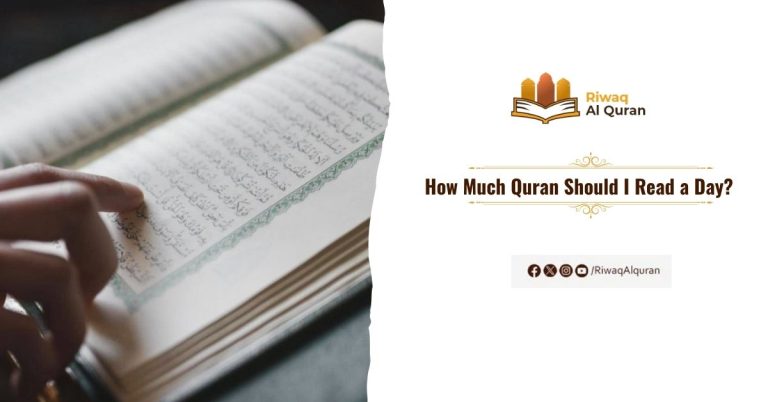Iqlab in Tajweed is a rule that modifies the pronunciation of the Noon Sakinah or Tanween when followed by the letter Baa (ب). It involves changing the Noon sound to resemble a Meem sound with a nasal tone, called Ghunnah, to create a smooth transition between sounds..
Following up on our recent articles on Tajweed rules, we touched briefly upon the rules of Noon Sakinah and Tanween. Let’s delve even deeper to better understand the functions of Noon Sakinah and Tanween in Tajweed, especially Iqlab rules. Keep reading this post to learn Iqlab letters, its rules, examples from the Quran… and more!
Table of Contents
Introduction Iqlab With The Noon Saakinah and Tanween
Noon Sakinah is the Noon (ن) without any vowel, namely Kasra كسرة, Fatha فتحة, and Dammah ضمة. In the Holy Quran, the Noon Sakinah can be written with a Sukoon (سكون) over it or with nothing above it at all like (ن).
Note that both have the same pronunciation and are called Noon Sakinah. Tanween is an additional Noon Sakinah used with the Kasra كسرة, Fatha فتحة, and Dammah ضمة.
There are four rules of Tanween and Noon Sakinah. All these rules, including the Iqlab rules, apply to the characters appearing after Noon Sakinah and Tanween:
- Izhar
- Ikhfa
- Idgham
- Iqlab
The last rule of Noon Sakinah and Tanween is Iqlab which is the topic of this article:
Definition of Iqlab in Arabic
Linguistically Qalb (Iqlab) means literally to change something. In the Arabic language, the term إقلاب (Iqlab) literally means “transformation” or “conversion.” Basically, in this sense, Iqlab in Tajweed means to turn one letter into another.


What Is Iqlab In Tajweed?
Iqlab in Tajweed refers to the transformation of the sound of Noon Saakin or Tanween into a Meem-like sound when followed by the letter Baa (ب), aligning with the word’s general meaning of changing one thing into another.
Quran reciters apply Iqlab because if you pronounce Noon followed by Baa, there would be some difficulty in pronouncing due to the distance of their exits in the mouth.
Therefore, Noon is pronounced as Meem as Meem and Baa are proximate in their exits. Furthermore, Meem is proximate to Noon in Ghunnah. The interesting fact is that in English, Latin, and French languages, when the letters Noon and Baa come beside each other, they are pronounced as Meem and Baa.
Iqlab Letters
Iqlab letters in Arabic or Iqlab words are not many. There is only one letter for Iqlab which is the letter Baa (ب). This rule is applied when the letter ن (Noon Saakin) or Tanween is followed by ب (Baa). The sound of the Noon Saakin or Tanween changes to a Meem (م) sound. For Example:
- مِنْ بَعْدِ (min ba’di) – From after
- مَنْ بَدَّلَ (man baddala) – Whoever changes
How to Pronounce Iqlab?
While reciting the Quran, when one’s eyes fall on the letter Noon or Tanween followed by the letter Baa, it is important to remember that the Noon sound will not be pronounced but will be changed to the sound of Meem Sakinah with Ghunnah.
This transformation results in a sound resembling Meem (م), as the Noon sound is converted to Meem with a slight nasal emphasis. Baa (ب) is the only letter that triggers this rule in the Quran, making it a unique concept to recognize for proper recitation.
Iqlab And Ghunnah
Ghunnah is a nasal sound produced in the nose rather than the mouth or throat. The Ghunnah is essential in Iqlab, as it gives a distinct nasal quality that lasts for about two counts. This nasalization softens the transition between Noon and Baa, ensuring a smooth and correct recitation in accordance with the rules of Tajweed.
The Iqlab is applied in the pronunciation of this verse as follows:
(وجَعَلْنَا مِنْۢ بَیْنِ اَیْدِیْهِمْ سَدًّا وَّمِنْ خَلْفِهِمْ سَدًّا فَاَغْشَیْنٰهُمْ فَهُمْ لَا یُبْصِرُوْنَ) (Ya-Sin:9)
In this verse, the letter Noon is in “Min*Baiyni” and is followed by Baa at the beginning of the next word. And the (*) refers to the place of Iqlab. So, it is pronounced as “Mim-Baiyni” with the sound of Ghunnah.
Experience Riwaq Al Quran Classes
Watch real moments from our live sessions at Riwaq Al Quran and see how we bring learning to life. These clips highlight our interactive, student-focused approach designed to keep learners engaged, motivated, and actively involved in every step of their educational journey.
What Are the Rules of Iqlab?
Here is a step-by-step guide for applying the Iqlab conditions:
1. Identify Noon Sakinah or Tanween
Start by examining the verse for any instances of Noon Sakinah (نْ), which is a Noon with no vowel, or Tanween, represented by double Fathah (ً), double Kasrah (ٍ), or double Dammah (ٌ) at the end of words. Recognizing these two forms is essential, as Iqlab only applies when either of them is followed by the letter Baa (ب).
2. Check for the Following Letter
Once you have identified Noon Sakinah or Tanween, check the next letter in the verse. If the letter Baa (ب) directly follows the Noon Sakinah or Tanween, the Iqlab rule will apply. No other letter triggers Iqlab, so if another letter follows, a different Tajweed rule will apply.
3. Change the Sound to Meem (م)
When Baa follows Noon Sakinah or Tanween, change the sound of the Noon or Tanween to resemble the letter Meem (م). This transformation allows a smooth transition between sounds, placing the pronunciation between Idgham (complete merging) and Ikhfaa (partial hiding). This sound alteration makes recitation smoother, given the similar articulation points between Baa and Meem.
4. Apply Ghunnah (Nasal Sound)
While pronouncing the changed sound of Meem, add Ghunnah, a nasal tone that resonates from the nose rather than the mouth or throat. This nasalization is held for two counts, creating a prolonged, distinct sound that enhances the flow of recitation. Ghunnah adds musicality to the Iqlab and is a crucial part of correct pronunciation.
5. Observe the Symbol for Iqlab in the Quran
In the printed Mushaf (Quran), you’ll often notice a small Noon (ن) symbol above the Meem (م) in verses where Iqlab is required. This symbol serves as a visual cue, reminding the reader to apply Iqlab. Pay attention to this mark to ensure you’re observing the Iqlab rule accurately.
6. Account for the Harakah of Baa
The letter Baa (ب) can carry any short vowel, or Harakah, whether Fathah (بَ), Kasrah (بِ), or Dammah (بُ). Regardless of the Harakah on Baa, the application of Iqlab remains the same. This flexibility means that the Iqlab rule is consistent across different vowel sounds, maintaining the same transformation and Ghunnah for all variations.
How to Recognize Iqlab in The Mushaf?
Iqlab is indicated in the script of the Mushafs by placing a small Meem (م) above the Noon Saakin (ن) that is followed by a Baa (ب), signaling its conversion to a Meem sound. As for Tanween, one of the two vowel markings (Fatha, Kasra, or Damma) is written, followed by a small Meem (م).
Iqlab Examples in the Quran
Following are some of the examples of Iqlab Tajweed rules in the Quran, where it can be seen that every time a small Meem occurs, the Iqlab rules apply, and it is because the Tanween or Noon Sakinah is followed by the letter Baa.
- (…وَاِنْ یَّخْذُلْكُمْ فَمَنْ ذَا الَّذِیْ یَنْصُرُكُمْ مِّنْۢ بَعْدِهٖؕ…) (Ali-Imran:160)
- (…وَ اللّٰهُ اَعْلَمُ بِاِیْمَانِكُمْؕ-بَعْضُكُمْ مِّنْۢ بَعْضٍۚ…) (An-Nisa:25)
- (وَاللّٰهُ یَسْمَعُ تَحَاوُرَكُمَاؕ-اِنَّ اللّٰهَ سَمِیْعٌۢ بَصِیْرٌ…) (Al-Mujadila:1)
- (فَاَذَّنَ مُؤَذِّنٌۢ بَیْنَهُمْ اَنْ لَّعْنَةُ اللّٰهِ عَلَى الظّٰلِمِیْنَۙ…) (Al-A’raf:44)
- (وَاَسِرُّوْا قَوْلَكُمْ اَوِ اجْهَرُوْا بِهٖؕ-اِنَّهٗ عَلِیْمٌۢ بِذَاتِ الصُّدُوْرِ) (Al-Mulk:13)
- (كَفٰى بِهٖ شَهِیْدًۢا بَیْنِیْ وَ بَیْنَكُمْؕ-وَهُوَ الْغَفُوْرُ الرَّحِیْمُ…) (Al-Ahqaf:8)
- (كَلَّا لَیُنْۢبَذَنَّ فِی الْحُطَمَةِ٘ۖ) (Al-Humazah:4)
- (اِذِ انْۢبَعَثَ اَشْقٰىهَا) (Ash-Shams:12)
- (وَاَنْتَ حِلٌّۢ بِهٰذَا الْبَلَدِۙ) (Al-Balad:2)
- (بِاَیِّ ذَنْۢبٍ قُتِلَتْۚ) (At-Takwir:9)
It is also advisable to check our article on the Meem Sakinah rules with examples, as well as the Laam Sakinah rules and how to master them for a deeper understanding of Tajweed lessons.
Read more about: Ikhfa, Idgham, Izhar, And Iqlab With Examples


Why Students Love Learning with Riwaq Al Quran
Hear directly from our students about how Riwaq Al Quran Academy has transformed their connection with the Book of Allah. Their experiences reflect the dedication, care, and quality that guide every step of our teaching.
Learn Iqlab Rules with the Best Certified Tutors In Tajweed!
We hope that this article has helped you in your quest to learn the Holy Quran with Tajweed, especially the Iqlab rules. At Riwaq Al Quran, we all strive to facilitate your path to learning Arabic and the Quran with right rules.
Therefore, we have specifically developed an interesting course for all those who wish to learn the science of Tajweed, including the Iqlab rules, and Learn Quran with Tajweed Online. Enroll in the course now for more explanation and await our regular articles for more Arabic and Tajweed lessons.
We offer several courses such as:
- Online courses for kids.
- Online Quran classes for kids and adults.
- Online Arabic courses
- Online Ijazah courses
- Online Islamic Studies courses.
Here are a sample of our set of Quran Courses that will be helpful for you:
- Online Tafseer Course: Delve into Quranic meanings with our insightful online Tafseer course.
- Noorani Qaida Online: Learn Quranic basics efficiently through our Noorani Qaida online program.
- Online Quran Recitation Course: Enhance Quranic recitation skills through our expert-led online course.
- Online Tajweed Classes: Master Tajweed rules for beautiful Quranic recitation in online classes.
- Quran Memorization Online Course: Memorize the Quran effectively with our specialized online memorization course.
- Online Qirat Course: Explore diverse Qirat styles with our comprehensive online Qirat course.
- Online Quran Classes for Kids: Nurture a love for the Quran in kids through interactive online classes.
Conclusion
Mastering the rules of Iqlab in Tajweed is essential for accurate Quranic recitation. By recognizing the occurrence of Noon Sakinah or Tanween followed by Baa, transforming the sound to Meem with Ghunnah, and adhering to Quranic symbols, learners can ensure correct pronunciation.
Practicing these rules alongside other Tajweed concepts enhances recitation skills and strengthens the connection to the Holy Quran. At Riwaq Al Quran, we offer specialized Tajweed courses to support your learning journey. Enroll now to deepen your understanding of Tajweed and the art of Quranic recitation.


































